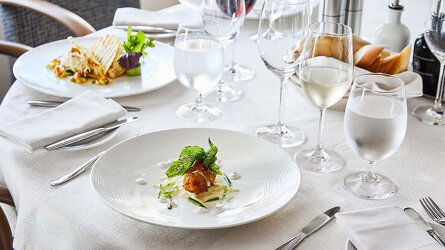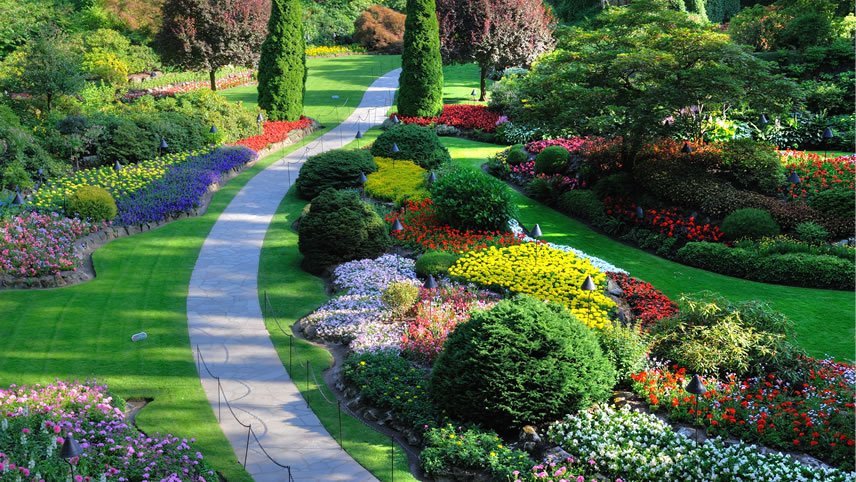Overview
Cruise Itinerary
Walvis Bay is the principal port of Namibia and is situated on the west coast of southern Africa - a quirky town focused around the busy harbour with many townspeople employed in the huge fishing and shipping industry that operates out of it.
One of the most unique and interesting aspects of Walvis Bay is it's huge natural lagoon. This always has numerous seabirds on and around it. Over 100,000 birds were counted on the lagoon, the most noticeable being flamingos and pelicans. These are joined annually by another 200,000 migratory birds, making this an excellent place for keen birdwatchers.
Days at sea are the perfect opportunity to relax, unwind and catch up with what you’ve been meaning to do. So whether that is going to the gym, visiting the spa, whale watching, catching up on your reading or simply topping up your tan, these blue sea days are the perfect balance to busy days spent exploring shore side.
Perched between the edge of the expansive Namib Desert and the cold waters of the Benguela Current lies the coastal city of Moçâmedes. Formerly known as Namibe, the south western Angolan city recently changed its back to its original Portuguese name, after being known as Namibe, between 1985 and 2016. Both names are used equally. Like much of Angola, Namibe has Portuguese roots. The city was founded in the mid-19th century by 160 settlers coming from the motherland as well as refugees fleeting the unrest in Brazil. The impact of Portugal has left its legacy on the city. Roman Catholic and colonial architecture in the historic centre of Moçâmedes range from Saint Ferdinand Fort and the churches of Saint Adrian and Saint Peter. Due to Namibe’s proximity to the desert, it is unsurprising that the city briefly changed its name. Vast deserts and semi-desert regions cover much of the territory, joining the Skeleton Coast of Namibia.
Desert vegetation is rife and includes the Welwitschia mirabilis, a rare plant found only in the Namibe Provence of South Angola and Namibia’s part of the Namib Desert. The plant, known colloquially as the “long-haired thing” is considered a living fossil, with experts believing that some specimens may be up to 5,000 years old, making Namibe’s examples the oldest living things on Earth. Namibe’s secrets are not just found in the desert however, the nearby (often dry) Arch Lagoon, or Lost Lagoon, is home to many bird species including water birds, raptors and weavers.
Ilha dos Tigres is the largest island in Angola, with an area of 38 square miles, and lies off the southwestern coast. It wasn’t always an island – before 1962 it was connected to the mainland, with a well-established fishing village named Tigres with about 1500 residents, including 300 Portuguese. However, the ocean broke through the isthmus during a heavy storm, destroying the water line to Tigres and creating an island overnight. Without pumped water, Tigres was eventually abandoned in 1974 and today remains a desolate ghost town. Although is disrepair, Many building remain standing, including the Roman Catholic Church.
The broad main street was actually built to be used as an airstrip in 1957 for light aircraft. Several plans for development have been proposed, including a prison and a fish factory, but nothing has eventuated. The waters surrounding the island are very rich in fish stocks and birdlife, with more than 25 species of birds.
Days at sea are the perfect opportunity to relax, unwind and catch up with what you’ve been meaning to do. So whether that is going to the gym, visiting the spa, whale watching, catching up on your reading or simply topping up your tan, these blue sea days are the perfect balance to busy days spent exploring shore side.
Luanda, the bustling capital of Angola, stands as a vibrant city where history meets modern growth. The seaside promenade, Marginal, offers a picturesque introduction to the city's coastal charm. Visit the Fortaleza de São Miguel for a glimpse into Angola's colonial past, perched atop a hill with sweeping views of Luanda.
For a leisurely start after disembarking, explore the unique Iron Palace, believed to have been designed by Gustave Eiffel. Alternatively, the bustling Mercado do Artesanato is an ideal spot to appreciate Angolan crafts and culture. It's a lively venue to mingle with locals and pick up traditional artifacts.
Days at sea are the perfect opportunity to relax, unwind and catch up with what you’ve been meaning to do. So whether that is going to the gym, visiting the spa, whale watching, catching up on your reading or simply topping up your tan, these blue sea days are the perfect balance to busy days spent exploring shore side.
Meaning "Good Good" in Portuguese, the charming islet of Ilhéu Bom Bom (Bom Bom Island) is located near the north coast of the island of Príncipe, one of the main islands of São Tomé and Príncipe. Bom Bom Island is known for its natural beauty being fully covered by forest vegetation, offering beautiful beaches and rich biodiversity. Go ashore on this tiny, lovely island to either enjoy the beaches and the facilities of a Bom Bom Resort or take a guided birdwatching or nature walk with your expedition staff. Look for both the blue-breasted and white-bellied kingfisher, which can often be seen flitting around the island. You may also spot golden weavers, Príncipe starlings, bronze mannikins, Príncipe drongos, Dohrn's thrush-babblers (some of the most vocal birds on the island), as well as swallowtails and stunning dragonflies. Return to the ship after your day of relaxation.
Days at sea are the perfect opportunity to relax, unwind and catch up with what you’ve been meaning to do. So whether that is going to the gym, visiting the spa, whale watching, catching up on your reading or simply topping up your tan, these blue sea days are the perfect balance to busy days spent exploring shore side.
Cotonou, Benin's vibrant economic hub, is a bustling city on the Gulf of Guinea. Its lively Dantokpa Market, one of West Africa’s largest, offers a sensory overload with its colourful displays of local crafts, textiles, and fresh produce. The city is also home to the Foundation Zinsou, a premier museum showcasing contemporary African art.
Take a stroll along the seafront at Fidjrosse Beach, where you can relax or enjoy local cuisine at nearby eateries. The Notre Dame des Apôtres Cathedral, with its striking red and white architecture, is another must-see. Cotonou’s energetic atmosphere, cultural richness, and coastal beauty provide a dynamic and engaging experience
Lomé, the capital of Togo, is uniquely positioned as a vibrant coastal city along the Gulf of Guinea. Known for its palm-lined boulevards and bustling markets, the city offers a dynamic mix of cultural experiences. The Grand Marché is a focal point, a sprawling market where textiles, spices, and local crafts abound, reflecting the rich tapestry of West African life.
The city's architecture displays an intriguing blend of traditional, colonial, and modern styles, with the Independence Monument marking a significant national landmark. Lomé's coastline features extensive beaches that invite relaxation and leisure activities. Additionally, the Lomé Cathedral and the Togo National Museum, housing historical and cultural artifacts, provide insights into the nation's heritage and artistic expressions.
Start your exploration of Accra at the Kwame Nkrumah Mausoleum, a tribute to Ghana's first president, surrounded by beautiful gardens. Nearby, visit the National Museum to delve into the nation's heritage through an impressive collection of artifacts.
For a taste of local life, head to Makola Market, where you can find everything from textiles to fresh produce. Enjoy a leisurely afternoon at Labadi Beach, a popular spot for relaxation and local entertainment. Don’t miss Osu Castle, a historic fort with stunning views of the Atlantic Ocean.
Tema is located about 30 kilometers (19 miles) from Accra a journey that takes roughly 45 minutes.
Life Onboard Silver Wind

Breaking into new waters in 2020 with her ice class hull, Silver Wind offers all inclusive luxury. Read more

Your butler will bring all you need to your luxury suite so you can simply relax. Read more

Take in world class performers, live shows, expert talks and movies in the Show Lounge. Read more

With experts to assist you can enhance and print your own photos of your voyage. Read more

With four fine dining restaurants to choose from your culinary journey with by filled with flavour. Read more

From the minute you step aboard Silversea's signature service will impress and indulge your every need. Read more
Brochure

Silversea Winter Voyages (2025-26)
Availability Click on prices below to view cabin upgrades and details
Tour & cruises prices are per person. Prices shown have savings applied, are subject to availability and may be withdrawn at any time without notice. Pricing and trip details are correct at this point in time, however are subject to confirmation at the time of booking and are subject to change by Silversea. For cruise itineraries, cabin images are sourced from Silversea. These should be treated as indicative only. Cabin inclusions, upholsteries and room layout may differ to the image(s) shown depending on the ship selected and your sailing dates.
















